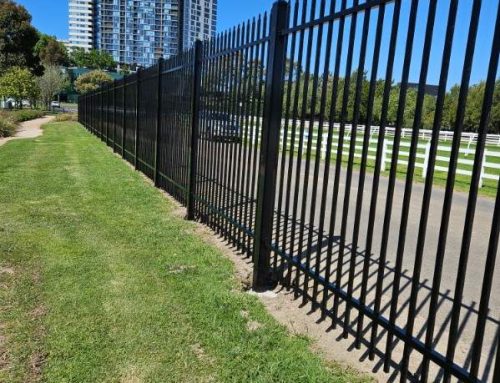Classification Of Barbed Wire, So You’d Know How To Make The Right Pick
Barbed wire classification might be the least of your worries when it comes to security fencing. But if bared wire is something you are looking to install either around your farm or industrial premises, then barbed wire classification should be the topic of the day. At least it’s the topic of our today’s blog post. Stay tuned and let’s make barbed wire classification easy and simple.
Barbed wire is a metal fencing material used for extra security or as a standalone fence itself. It’s a metal cable with sharp projections at a certain intervals. It’s usually made out of two metal wires twisted around each other. Having that double wire allows barbed wire to expand and contract when the temperature changes occur. This is the reason why in cold and in minus Celsius degrees it does not break. The sharp projections, or points, are named barbs, which are short pieces of wire twisted around the cable wires, either around just one or both cable wires.
When it comes to barbed wire classifications, there are few things to remember. Below is a simple barbed wire classification:
1. SINGLE STRAND BARBED WIRE OR DOUBLE STRAND BARBED WIRE
Single strand barbed wire – contains a single strand and barbs, making it much more economical and of course lighter weight. It’s used quite often, but you should remember that it’s quite easy to cut it and therefore making it not the best choice for heavy duty applications. It can be cheaper, but do think of the reason you are installing it and in some cases you’d better off investing a bit more money and getting a stronger solutions.
That stronger solution might be a double strand barbed wire. It’s formed with two strand wires. The barbs are twisted between those two wires and then fastened onto the line wire. Having a double wire strand makes it a much better security application as it’s stronger and is much harder to be destroyed. For example you can use double strand barbed wire in prisons and military sites.
2. SINGLE BARB BARBED WIRE OR DOUBLE BARB BARBED WIRE
The second factor used to classify barbed wire and its structure, are barbs. They play a very important role. Being sharp, they have a psychological effect and can frighten people trying to trespass it. Barbs are also very effective when it comes to livestock, they can keep your animals safe from wild animals trying to get in, and also will stop your own animals from running away.
You can classify single and double barb barbed wire. Single barb barbed wire is also know as 2-point barbed wire. Basically it has a single barb wire twisted around the line wire. 2-pointed, single barb barb wire, can be used for livestock and is highly effective.
Double barb barbed wire is also called 4-point barbed wire, and it uses two barbed wire instead of one, and is twisted together on the line wire. Double barb barbed wire is used for heavier duty applications.
3. TRADITIONAL TWIST BARBED WIRE OR REVERSE TWIST BARBED WIRE
The last classification factor we are going to talk about is the twist type of the barbed wire. The twist type means the direction in which the wire is twisted. We can talk about the twist type when it comes to double strand barbed wire as it is made out of two steel wire twisted around each other in order to make a stronger and more durable, rigid wire.
Depending on the twist direction, you can differentiate traditional twist barbed wire and a reverse twist barbed wire. The difference is that traditional twist barbed wire has steel wires that are twisted in one single direction. It’s a simple structure that has barbs twisted between two lines. It’s a very common security application.
The reverse twist barbed wire has wires that are twisted in the opposite directions, and the barbs are twisted outside of the two lines. Having a reverse barbed wire makes it much stronger and raises its breaking strength.
Traditional barbed wire is less expensive compared to the traditional twist barbed wire, but it is much more suitable for heavy duty applications!
4. GALVANIZED BABRED WIRE OR PVC COATED BABRED WIRE
For an extra protection from the corrosion, you can choose between the coating type: galvanized or PVC coated. When it comes to PVC coating for the fencing solutions, Diamond Fence offers green and black PVC coatings, but they are the most commonly used colours.
Hope we made barbed wire classification easy and simple for you to understand, and now you can make a choice, which one do you prefer and need. Diamond Fence is here to help you out if you have made a decision on which fencing type suits you the best, or even if you haven’t made that choice yet. We have some of the best fencing specialists in town, who are able to advise you on steel fencing solutions.
For Diamond Fence’s fencing solutions give us a call (03) 9753 4566, shoot us an email on info@diamondfence.com.au , or just get a FREE online quote.








